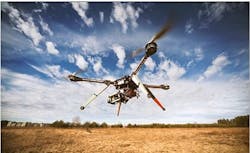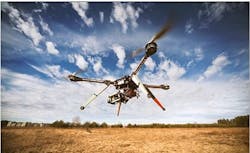FAA sells interim policy for unmanned aircraft as bridge from past to future
WASHINGTON, 27 March 2015. Federal Aviation Administration (FAA) officials in Washington have established an interim policy to speed airspace authorizations for certain commercial unmanned aircraft systems (UAS) operators who obtain Section 333 exemptions.
Under the new policy, the FAA will grant a Certificate of Waiver or Authorization (COA) for flights at or below 200 feet to any UAS operator with a Section 333 exemption for aircraft that weigh less than 55 pounds, operate during daytime Visual Flight Rules (VFR) conditions, operate within visual line of sight (VLOS) of the pilots, and stay certain distances away from airports or heliports:
5 nautical miles (NM) from an airport having an operational control tower; or
3 NM from an airport with a published instrument flight procedure, but not an operational tower; or
2 NM from an airport without a published instrument flight procedure or an operational tower; or
2 NM from a heliport with a published instrument flight procedure
The new policy is designed to help bridge the gap between the past process, which evaluated every UAS operation individually, and future operations after a final version of the proposed small UAS rule is published, officials explain.
The “blanket” 200-foot COA permits flights anywhere in the country except restricted airspace and areas such as major cities, where the FAA prohibits UAS operations. Previously, an operator had to apply for and receive a COA for a particular block of airspace, a process that can take 60 days, whereas the new policy will allow companies and individuals who want to use UAS within these limitations to start flying much more quickly than before, officials describe.
Section 333 exemption holders will automatically receive a “blanket” 200 foot COA.
For new exemption holders, the FAA will issue a COA at the time the exemption is approved. Anyone who wants to fly outside the blanket parameters must obtain a separate COA specific to the airspace required for that operation.

